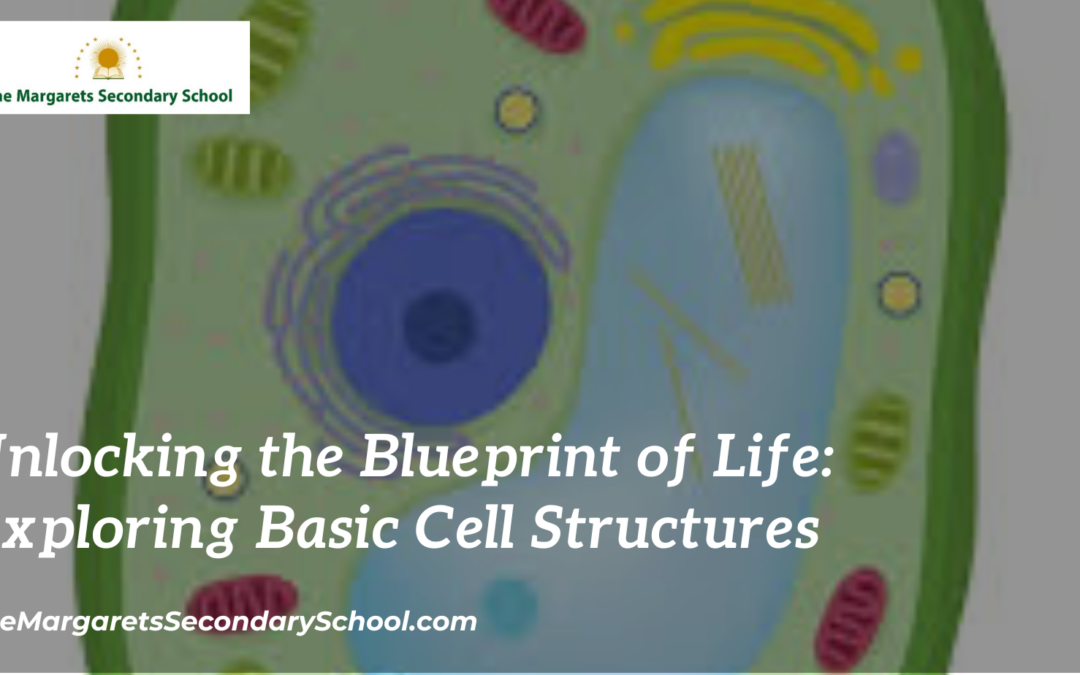Basic Cell Structures
Within the microscopic realm lies a world of complexity and elegance, where the fundamental units of life, cells, reveal their intricate structures. These structures, both simple and sophisticated, orchestrate the functions that define the essence of living organisms. This article delves into the basic cell structures, unveiling their roles and significance in the grand symphony of biology.
Cell Membrane: The Guardian of Boundaries
At the heart of every cell lies a boundary that separates it from its surroundings – the cell membrane, also known as the plasma membrane. Composed of a lipid bilayer interspersed with proteins, this semi-permeable barrier regulates the passage of molecules, ions, and nutrients into and out of the cell. It also plays a crucial role in cell communication and recognition.
Cytoplasm: The Living Medium
Contained within the cell membrane is a gel-like substance called the cytoplasm. Within this dynamic environment, a multitude of cellular processes occur. It hosts various organelles, enzymes, and molecules, serving as a bustling arena where life-sustaining activities unfold.
Nucleus: The Keeper of Genetic Information
Often referred to as the cell’s control center, the nucleus houses the cell’s genetic material in the form of deoxyribonucleic acid (DNA). DNA contains the instructions for building and maintaining the cell and orchestrating its activities. The nucleus is surrounded by a double-membrane structure called the nuclear envelope, which separates the genetic material from the cytoplasm.
Nucleolus: The Workshop of Ribosomes
Nested within the nucleus is the nucleolus, a region responsible for producing ribosomes – the cellular machinery that synthesizes proteins. The nucleolus serves as a site for ribosomal RNA (rRNA) synthesis and ribosome assembly.
Endoplasmic Reticulum: The Cellular Highway
The endoplasmic reticulum (ER) is a network of membranous tubes and sacs that traverse the cytoplasm. It comes in two forms: rough ER, studded with ribosomes that synthesize proteins, and smooth ER, which plays a role in lipid metabolism, detoxification, and calcium storage.
Golgi Apparatus: The Cellular Post Office
The Golgi apparatus is a stack of flattened, membrane-bound sacs that modifies, sorts, and packages proteins and lipids for transport within or outside the cell. It acts as the cell’s post office, ensuring that molecules are delivered to their intended destinations.
Mitochondria: Powerhouses of Energy
Mitochondria are often hailed as the powerhouses of the cell. These double-membraned organelles produce energy through a process called cellular respiration. They convert nutrients into adenosine triphosphate (ATP), the molecule that fuels most cellular activities.
Lysosomes: Cellular Clean-up Crew
Lysosomes are membrane-bound organelles containing enzymes that break down waste materials, cellular debris, and foreign invaders. They play a critical role in recycling cellular components and maintaining the cell’s cleanliness.
Cytoskeleton: The Cellular Framework
The cytoskeleton is a dynamic network of protein filaments and tubules that gives the cell its shape, provides structural support, and enables cell movement. It consists of microtubules, microfilaments, and intermediate filaments.
A Window into Complexity
These basic cell structures are the building blocks of life, each playing a unique role in orchestrating the myriad functions that sustain living organisms. As scientists delve deeper into the intricate details of these structures, new insights continue to emerge, enriching our understanding of the cellular world. From the orchestrated movements of the cytoskeleton to the intricate replication of DNA within the nucleus, the study of these structures not only deepens our understanding of life’s mechanisms but also inspires awe and appreciation for the complexity that underlies even the simplest of living cells.




